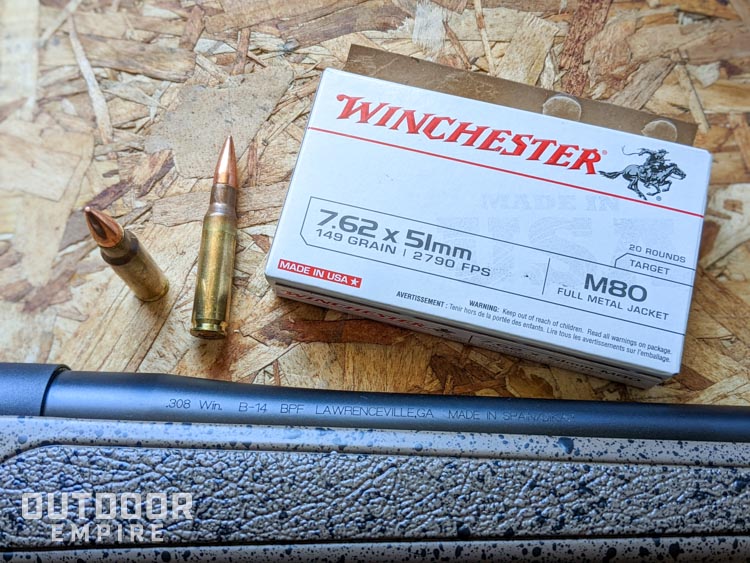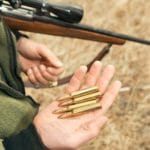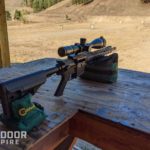Firearm safety is important, and one aspect of firearm safety is to only load your rifle with compatible ammunition.
Even guns chambered in the same caliber may not always be compatible. 9×19 Parabellum and 9×18 Makarov are both 9mm caliber pistol rounds but should never be confused for each other!
There are a few cases when several cartridges can safely be fired from the same gun, though. For example, you can shoot civilian .223 Remington loads in milspec 5.56×45 rifles.
.308 Winchester is, basically, the civilian version of 7.62x51mm NATO. Are they compatible?
The answer is yes, in one direction: You can safely shoot 7.62×51 in .308 rifles. However, it may not be safe to fire .308 from a 7.62×51 gun!
Recommended: Best .308 Rifles Reviewed
Why Loading 7.62×51 in a .308 Rifle Is Considered Safe
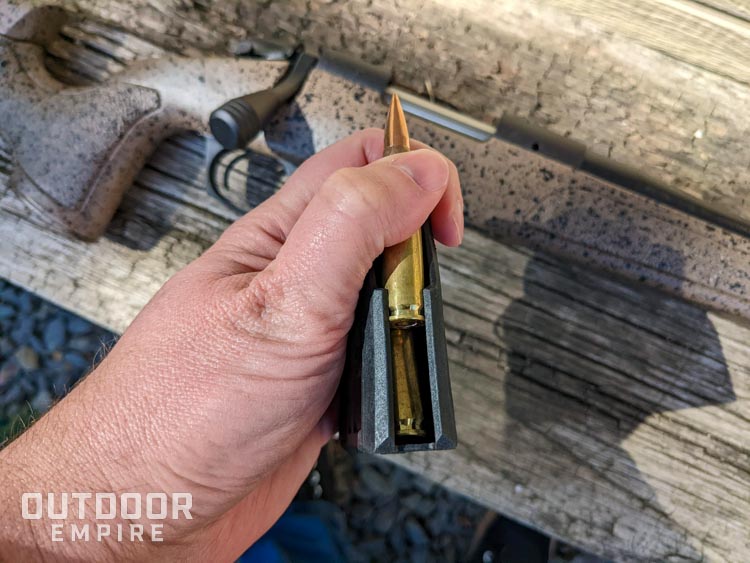
There are three main factors that affect whether or not it’s safe to chamber and fire a certain cartridge in a gun designed for a different cartridge:
- Dimensional Compatibility
- Maximum Pressure
- Headspacing
Let’s look at these potential differences and similarities in detail. What we learn may surprise some folks.
Dimensional Compatibility
Dimensional compatibility refers to the outside dimensions of the case and the bullet’s caliber.
Both .223 Remington and 5.56×45 NATO have outside dimensions that are almost interchangeable. They also both use 0.224″ bullets that weigh the same.
.38 Special and .357 Magnum are another example of cross-compatibility. They both use 0.357″ bullets and the .357 Mag case is simply a longer .38 Special case. You can fit a .38 round in a .357 gun but not the other way around.
This was done for a good reason, which we’ll get to shortly.
Now, compare .308 and 7.62×51 cases. They are almost identical on the outside. So, no problem here.
Maximum Pressure

.357 Magnum cases are longer than .38 Special cases because .357 firearms have to be able to handle 35,000 psi and .38 guns have to handle only 17,500 psi.
That’s twice the pressure!
If you loaded .357 Mag round into a .38 Special gun and pulled the trigger, the gun might explode. So, Smith & Wesson designed their cartridge to be physically incompatible with the weaker round.
.308 Winchester is generally loaded to higher pressures than 7.62×51 rounds are loaded. And some people say this as why .308 Win in a 7.62 rifle is a bad idea.
That’s not quite the case.
While it’s true that SAAMI’s specifications for .308 Win are a maximum pressure of 62,000 psi and the US military’s specifications (using SAAMI’s techniques) allow a maximum pressure of 58,016 psi, that’s the average maximum pressure.
MIL-C-46931, which covers the requirements for M80 ball 7.62×51, allows a variance of +7,500 psi for rounds stored in extreme temperatures.
That’s an actual potential maximum pressure of 65,516 psi, which exceeds the commercial specifications!
Side Note: You may notice that some sources put 7.62x51mm NATO’s maximum pressure at 50,000 psi. This is based on copper units of pressure, which is a different way of measuring pressure and gives a lower measurement than SAAMI’s piezoelectric quartz transducer method. This is why I used the US military’s specifications.
So, what’s the real reason why you shouldn’t chamber .308 Winchester in any ol’ 7.62×51 rifle?
Headspacing
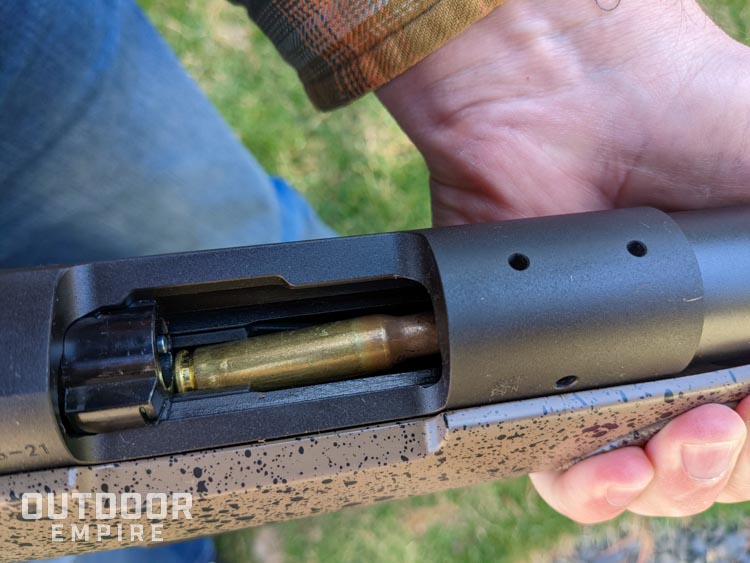
7.62×51 chambers may be too long for .308.
Headspacing is a way to measure a chamber to make sure it’s the right size for the cartridge.
Too little and the round may not fit or may cause too much bolt thrust, locking up the gun. Too much headspace and portions of the case may be unsupported, potentially causing case head separation upon firing.
There are three types of headspace gauges: GO, NO-GO, and FIELD.
If the bolt closes on the GO gauge then the chamber is at least as long as it should be.
If the bolt closes on the NO-GO gauge then the chamber is a bit long. The rifle might still be good, just a bit loose in the chamber and less accurate. Test the headspace with a FIELD gauge next.
If the bolt closes on the FIELD gauge then the chamber is at or beyond its maximum length and you shouldn’t use the firearm until this is fixed.
Here are .308 Winchester’s headspace measurements:
- GO – 1.6300″
- NO-GO – 1.6340″
- FIELD – 1.6380″
And the military specifications for 7.62x51mm NATO’s minimum and maximum headspace measurements:
- Minimum – 1.6355″
- Maximum – 1.6455″
The minimum military headspace length is longer than .308’s NO-GO measurement.
And its maximum length?
Quite a bit past the point when you’re supposed to retire a .308 chamber!
7.62 NATO cases are thicker than .308 cases, which is why they can withstand the longer headspace despite the same exterior dimensions.
Can You Load .308 in a 7.62×51 Rifle?
Now, knowing the math above, the answer to this question is:
Yes, but only if the rifle has a tight chamber. Get it measured professionally since the two cartridges use different headspace gauges.
Not every 7.62×51 rifle will have a tight enough chamber for you to fire .308 Win safely. Looser chambers improve feeding and extraction in dirty conditions so you should expect every milsurp 7.62×51 rifle to be on the looser side, especially if it’s used.
So, never chamber .308 in a 7.62 NATO rifle unless you’ve had the headspacing confirmed!
Conclusion
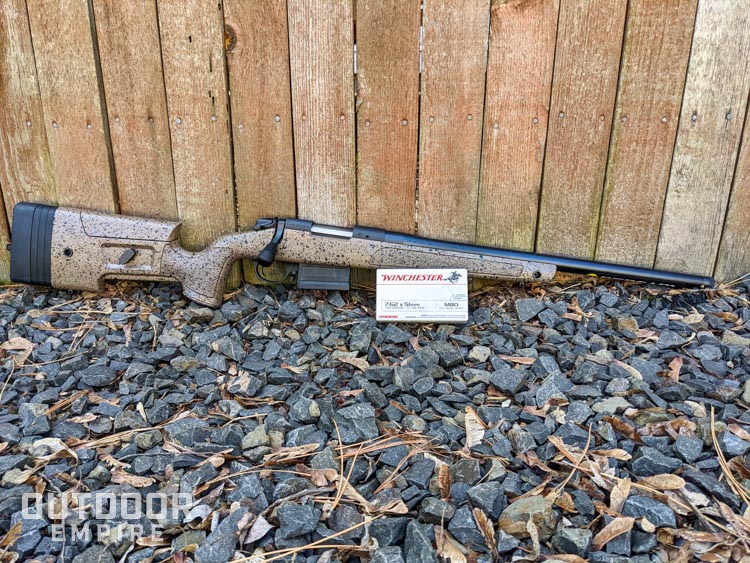
7.62x51mm NATO and .308 Winchesters are very similar cartridges and have the same pedigree.
However, they are not exactly the same. 7.62 NATO cases have thicker walls, which lets them stay at safe pressures in rifles with longer chambers.
.308 Win cases are thinner and are designed to fit into a slightly shorter chamber. They are not designed to handle 50k+ psi in a long 7.62×51 chamber and can rupture, to disastrous results!
So, unless you’ve had your 7.62 rifles’s chamber professionally measured, leave the .308 ammo at home.
However, if you have a .308 rifle, you’re good to load 7.62×51 and use the cheaper surplus ammo!

